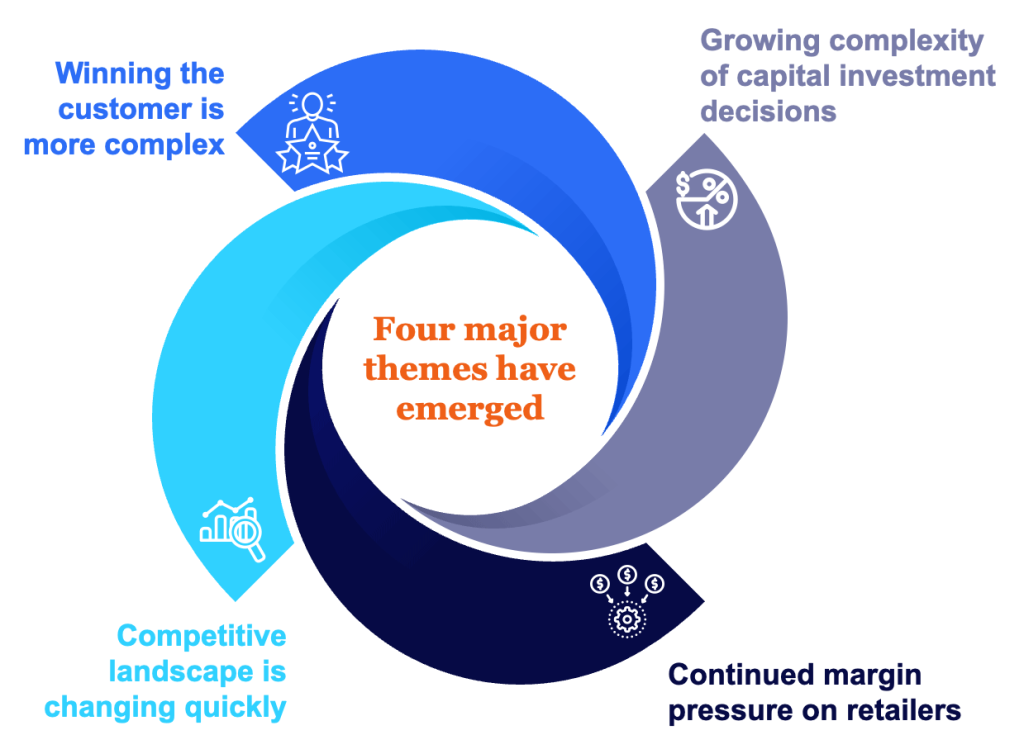
One of the most significant transformations is the shift in generational spending power. Boomers, once a dominant force in retail, are no longer contributing to category growth, while Millennials and Gen Z are reshaping the market with new shopping habits. By 2030, Millennials and younger generations will make up 67% of the U.S. population, accelerating digital-first purchasing behaviors and alternative retail formats.1 Gen Z, in particular, is driving e-commerce expansion, with 1 in 3 ordering groceries online at least once a week.2 The rise of private labels is further disrupting traditional retail dynamics, as 53% of retailers now view store brands as their primary growth driver.1 Many consumers now view private labels as equal to or better than national brands, particularly when they align with sustainability or premium positioning.
As competition intensifies and margins tighten, retailers must rethink their strategies to stay ahead. The rise of AI-powered shopping experiences, omnichannel retailing, and value-driven assortments is redefining what it means to win in the marketplace. Understanding these trends will be essential for brands looking to navigate the complexities of the modern retail environment and build stronger connections with today’s value-conscious, digitally engaged shoppers.



